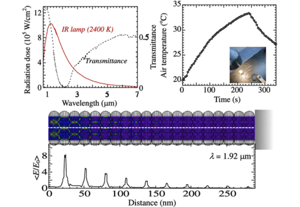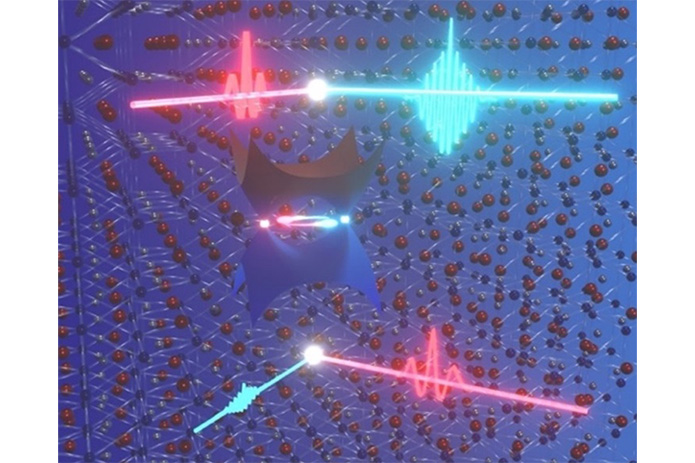Share this
Authors
Hiroaki Matsui, Miho Shoji, Satoko Higano, Hidehiko Yoda, Yosuke Ono, Jiaqi Yang, Teppei Misumi, and Aki Fujita
Abstract
Three-dimensional nanoparticle (NP) assemblies show interesting optical responses that differ from naturally occurring materials, such as metals, oxides, and semiconductors. In this study, we investigate the optical response of thin films comprising Sn:In2O3 NPs (ITO NP films) based on the correlation between complex permittivity and infrared (IR) reflectance for solar-thermal shielding applications. IR ellipsometry measurements are conducted to clarify the presence of Lorentz resonances in plasmonic metamaterials. The Lorentz resonances are correlated to the electric field strength at interparticle gaps by varying the Sn dopant concentration, as confirmed using finite-difference time-domain (FDTD) simulations. High solar-thermal shielding performance was obtained owing to selective near-IR reflection based on strong Lorentz resonances as the ITO NP films were electrically polarizable but magnetically inactive. Thermal shielding efficiency was demonstrated via a comparison of the air temperature change in a simulated box used as a model house. Additionally, we demonstrate the significance of NP packing density on the enhancement of the near-IR reflectance. The role of interparticle spacing for high near-IR reflectance was revealed by comparing effective medium approximation analyses and FDTD simulations. This relationship was also demonstrated by the reduction of solar-thermal shielding performance when using aggregated ITO NPs. Our work confirmed that the control of complex permittivity in plasmonic metamaterials must be considered in the structural design of transparent and reflective materials for solar-thermal shielding applications.

ACS Applied Materials & Interfaces: https://pubs.acs.org/doi/10.1021/acsami.2c14257
These Related Stories


